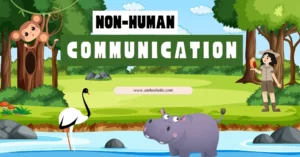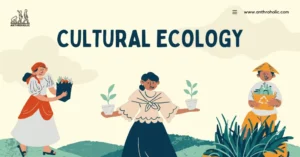AI Answer Evaluation Platform Live Now. Try Free Answer Evaluation Now
Transculturation
The term “transculturation” was coined by Cuban anthropologist, Fernando Ortiz in his book “Contrapunteo cubano del tabaco y del azúcar” (1940). The term was formulated to describe the social transformation that occurs when a society acquires foreign cultural material. This transformation involves the displacement or loss of a society’s culture as a result of the acquisition or imposition of foreign material, and the resulting amalgamation of the indigenous and the foreign to produce an entirely new, distinctive cultural product [5].

Background
The term “acculturation” was at the time commonly used by North American anthropologists working in the field of “acculturation studies”. Fernando Ortiz proposed that the new term, i.e. “transculturation”, for the phenomena of “cultural contact” may take its place [2].
He allegedly attributed that the anthropologists of acculturation studies made the ethnocentric error of presuming that, in the event of prolonged contact between two distinct cultures, the stronger culture would always force itself upon the weaker one [2]. According to Ortiz, the term “transculturation” departs from such notions that cultural influence is “unidirectional” and instead highlights the violence, as well as the multilateralism, of cultural interaction in colonial settings [3].
Ortiz therefore aimed to replace the term “acculturation” and its implication that the original or the weaker culture leaves not even a single trace once it is inevitably absorbed (deculturated) by the stronger culture. He does this while referencing the history of Cuba and mentioning that the Cuban case could be expanded to all of the American continent [3].
Significance
The term “transculturation” accurately describes the various stages of the transitive process from one culture to another because it also entails the loss or uprooting of one’s former culture, referred to as the term “partial disculturation,” in contrast to what the Anglo-American term acculturation suggests. Additionally, it denotes the following emergence of a new cultural phenomenon, also referred to as neoculturation [5].
In his preface to Ortiz’s work, anthropologist Bronislaw Malinowski observed that transculturation wasn’t merely a mosaic or an odd fusion of two belief systems. Instead, it demonstrates the uniqueness of a new cultural phenomenon. The transcultural model highlights the loss of the two systems in the emergence of the (new) third while also noting the coexistence of two elements [5]. According to Malinowski, “Transculturation is a process in which both parts of the equation are modified. It is a process through which a new reality arises, one that is complicated and altered and not just a mechanical mosaic or collection of attributes. It is a new phenomenon which is original and independent” [3].
Ortiz’s definition of transculturation thus highlights two important processes: i) the transmission of elements from one culture to another, and ii) the loss or alienation of elements from the former culture. This partial disappearance of the former and original culture is followed by the emergence of a new cultural identity, characterized by a new cultural phenomenon. Ortiz observed that the second or succeeding generations continue to strongly preserve their previous culture, to some extent. The emerging culture diverges from the original society’s culture, which creates an entirely new, unique, and distinct reality [4].
The process of Transculturation
Transculturation can occur without any conflict, but it typically involves some tensions because foreign cultural values are imposed on the receiving society. Anthropologist Fernando Ortiz outlines the process of transculturation by discussing the interactions between white European colonizers and black slaves in colonial Cuba [1]
- The oppressed group becomes subordinate to the oppressor group in the early stages of transculturation and will act with hostility and attempt to revolt against it [1].
- The oppressed group will modify its behavior in the following stage to prevent the unfavorable effects of challenging the subjugation of the oppressor group [1].
- Ultimately the group that is under the oppressive group’s control adopts and emulates its cultural practices [1].
Do we live in a Transcultural society?
Society today is characterized by multiculturalism, interculturality and transculturation. Societies have evolved into new venues for change and interactions between various cultural meanings, values, choices, and points of view during periods of intense migration. Due to people’s needs, ways of life, decisions, and behaviors, this promotes change and cultural diversity but also results in new contentious situations. It is crucial to keep in mind that these events and occurrences are not simply diachronic processes. Today’s societies can at best be described as multicultural [4].
The scope of a transcultural point of view is greater. It suggests acceptance by several cultures that are in contact, at present, and not just gradually or over time. An important feature of the present day is that this process is much faster due to factors like immigration and migration among others. As such, there can be different modes and degrees of transculturation. [4].
Modes of transculturation
Direct transculturation
Direct transculturalism takes place in societies which have gone through some form of cultural invasion. It also takes place in societies where one culture enjoys hegemonic dominance (economic, social or political). The dominant culture imposes its own standards and makes a concerted effort to dissipate the prior culture. A new cultural reality that is largely based on the more dominant culture, with some influence from the oppressed minority group, arises as an outcome [4].
Oblique transculturation
This process can also be referred to as indirect transculturation. This occurs in societies where various cultures coexist in the same area. Mutual cultural exchanges are inevitable and each group borrows elements from the other. This frequently occurs in societies where immigration is frequent [4].
Inverse transculturation
In some circumstances, the transculturation process takes an unexpected turn when the minority group transfers elements to the majority group against pressure, either through processes of adaptation or in order to reject its own views. Typically, this circumstance arises in response to societal necessities rather than out of respect or other similar motivations. It is typical in societies with a large indigenous population or in situations where immigrants incorporate aspects of their own cultures into the host culture [4].
Degrees of Transculturation
Transculturation happens when two distinct cultures come into contact and one of them attempts to impose its own norms either directly or indirectly. Thus, A (the original culture) and B (external culture) are connected. In the past, the actual contact was typically accomplished through imposition and force, and pressure from B was typically used to dilute A. In contrast, the transculturation methods in the modern, globalized society are quite different. B can participate in society’s events while still preserving some of its traditions in personal or familial settings [4].
Marginalization and exclusion frequently work their way from B to A in societies that are predominantly indigenous. Self-marginalization is a significant process of transculturation in this sense. The fact that their traditions are deeply ingrained, these collectives tend to preserve their customs and beliefs while adopting only a small portion of the imposed culture, solely for social motives [4].
References:
[1] Briceño, Gabriela, V. “Transculturation | What It Is, Characteristics, History, Process, Examples.” Euston96, 2 Dec. 2021, www.euston96.com/en/transculturation.
[2] Gomez, Miguel Arnedo. “Fernando Ortiz’s Transculturation: Applied Anthropology, Acculturation, and Mestizaje.” The Journal of Latin American and Caribbean Anthropology, vol. 27, no. 1–2, June 2022, anthrosource.onlinelibrary.wiley.com/doi/epdf/10.1111/jlca.12590.
[3] Jobs, Sebastian, and Gesa Mackenthun. Agents of Transculturation: Border-Crossers, Mediators, Go-Betweens. Waxmann Verlag, 2013.
[4] Mariscal, David Caballero, and Agar Marin Morales. “Cultural Angle and Degrees of Transculturation in Multicultural Societies.” Mediterranean Journal of Social Sciences, vol. 6, no. 4, Aug. 2015, https://doi.org/10.5901/mjss.2015.v6n4s3p590.
[5] Taylor, Diana. “Transculturating Transculturation.” Performing Arts Journal, vol. 13, no. 2, 1991, pp. 90–104. JSTOR, https://doi.org/10.2307/3245476. Accessed 8 Apr. 2023.




